
Table of Contents
Learn about neuroplasticity's origin, types, and use in different populations and how you can rewire your brain to improve plasticity.
Key Takeaways
- Brain's Ability to Adapt: Neuroplasticity refers to the brain's ability to reorganize itself by forming new neural connections throughout life. This ability allows neurons to adjust their activities in response to new situations or changes in their environment.
- Learning and Memory: Neuroplasticity is fundamental to learning and memory. It enables the brain to encode experiences, learn new information, and adapt to injuries by reorganizing neural pathways.
- Recovery from Injury: The brain's plasticity is crucial in recovering from injuries such as strokes. Through rehabilitation, patients can regain lost functions by creating new pathways and strengthening existing ones.
- Behavior and Habits: Neuroplasticity explains how behaviors and habits can be changed. Consistent practice and repetition can alter brain structures, supporting the development of new skills and the breaking of old habits.
- Mental Health: Neuroplasticity plays a significant role in mental health. It underlies the effectiveness of therapeutic interventions for conditions like depression, anxiety, and PTSD, as these treatments can induce beneficial changes in brain structure and function.
What is Neuroplasticity?
Did you know that the human brain undergoes constant changes via a process known as neuroplasticity?
Neurons are nerve cells that make up the brain and nervous system. Plasticity refers to the brain's ability to change and its malleability. The nervous tissue in the brain has a tremendous capacity for plasticity.
Therefore, neuroplasticity, also known as brain plasticity, is the ability of the brain to adapt and change. It is a term that refers to the ability of the nervous system to respond to intrinsic or extrinsic stimuli by restructuring and reorganizing brain structure and function and growing neural networks.
The structural and functional changes come from brain damage, environmental changes, new experiences, or structural changes attributed to learning.
Neuroplasticity helps us adapt to physiological changes, new experiences and environmental pressures. When we undergo new experiences, we create new neural connections between the neurons and rewire the brain to adapt to new situations.
While neuroplasticity happens on a daily basis, we can also encourage and stimulate brain plasticity.
History and Research of Neural Plasticity
Jerzy Konorski first coined the term neuroplasticity in 1948; a neuroscientist described changes he observed in neuronal structures, and it was more widely used in the 1960s.
Until the 1960s, scientists believed brain development and changes could only occur during early childhood and infancy. By adulthood, the brain's structure becomes permanent.
However, the idea of neuroplasticity dates back even further to the "father of neuroscience," Santiago Ramon y Cajal. In the early 1900s, he discovered that the human brain changes after individuals reach adulthood, contrary to popular beliefs at the time.
In the 1960s, another discovery stated that neurons could reorganize after a traumatic event. Research also discovered that stress could change the structure of the brain and its function.
Researchers in the late 1990s found that stress can also kill brain cells; however, this conclusion is not yet validated.
For several decades, the brain was considered a "nonrenewable organ" in that brain cells are contained in a finite amount and die as individuals age. As said by Ramon y Cajal, "In adult centers, the nerve paths are something immutable, ended and something fixed. Nothing may be regenerated, and everything may die".
Further studies found other ways for the brain cells to die, adapt, reconnect, replenish and regrow, a process called adult neurogenesis.
How Does Neuroplasticity Work?
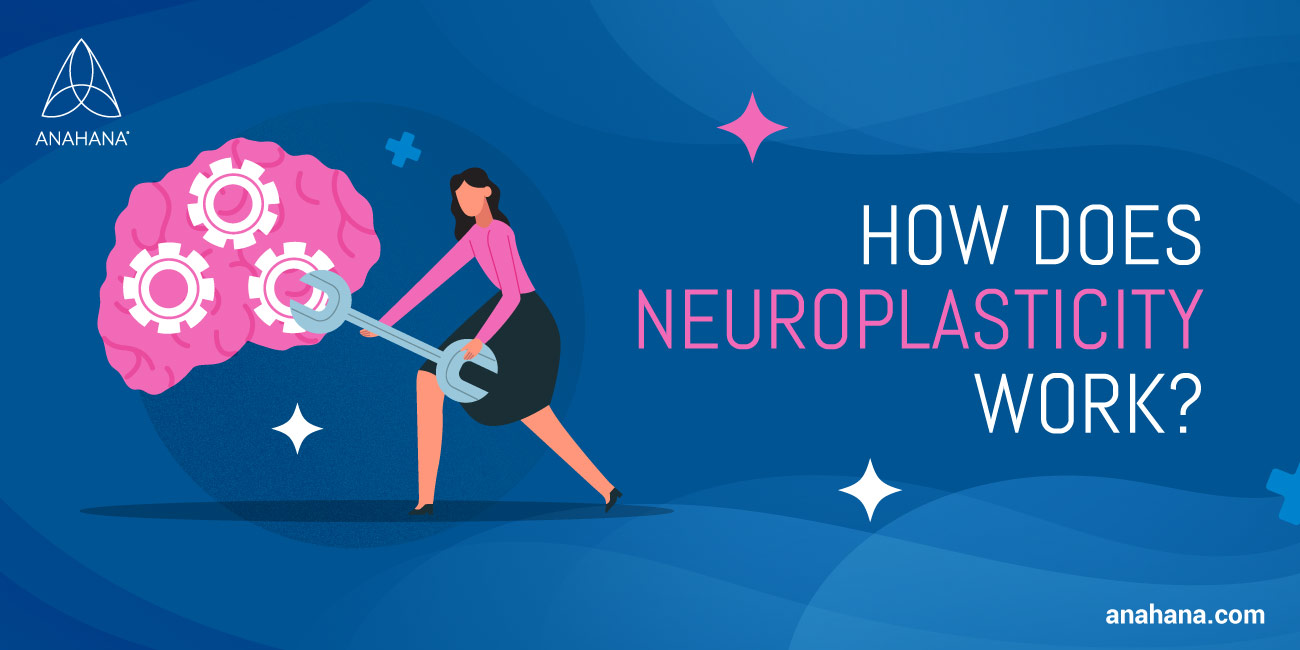 The brain is composed of individual working units or vast networks called neurons. Millions of interconnected neurons work together to accomplish a single task.
The brain is composed of individual working units or vast networks called neurons. Millions of interconnected neurons work together to accomplish a single task.
The neural networks follow specific and unique connectivity patterns, firing in equally specific sequences, and neurons help individuals complete various tasks.
Rapid brain development and growth occur in individuals during the first few years as a child. For example, when a child is born, each neuron in the cerebral cortex has approximately 2,500 small gaps, or synapses, between neurons where they relay nerve impulses.
By age three, the number increases to 15,000 synapses per neuron. Adults only have half this number of synapses. The reason for this is synaptic pruning, whereby new experiences eliminate some connections in the brain while strengthening other connections.
Frequently used neurons have stronger connections in the brain, while never or rarely-used neurons eventually die. When weak connections prune away, and new connections are made, the brain becomes adaptable to changing circumstances and environments.
Neuroplasticity vs. Neurogenesis
While neuroplasticity and neurogenesis are related concepts, these are two different concepts.
Neuroplasticity refers to the brain's ability to form new pathways and connections and rewire its circuits. Neurogenesis, on the other hand, is the ability of the brain to grow new neurons.
Neurogenesis is a fascinating concept. The potential to grow new neurons and replace dead or damaged neurons paves the way to new prevention and treatment of dementia, recovery from brain injuries, and many other areas we are unaware of.
Structural and Functional Neuroplasticity
Experimental brain research has found two main types of neuroplasticity, functional plasticity, and structural neuroplasticity.
Functional neuroplasticity is the ability of the brain to move functions to an entire brain area from a damaged area of the brain. It is initiated by learning and development, resulting in permanent structural changes in neural synapses.
Structural plasticity is a change in the strength of neuron connections in the brain. The brain can alter its physical structure in response to learning and the brain's ability to change its neuronal connections.
More Types of Neuroplasticity
Other types of neuroplasticity include experience-dependent plasticity. Experience-dependent plasticity is the constant process of organizing and creating neuron connections through a person's life experiences.
Homeostatic plasticity involves mechanisms of the brain that maintain homeostasis of the synaptic network by coordinating changes in excitability and connectivity across multiple neurons to stabilize circuit function.
Synaptic plasticity is the brain's ability to make long-lasting, experience-dependent changes in the strength of neuronal connections. This is a fundamental property of neurons, as they can alter the efficacy and strength of synaptic transmission through different activity-dependent mechanisms, known as synaptic plasticity.
Synaptic plasticity occurs when the presynaptic neuron stimulates the postsynaptic neuron, adding more neurotransmitter receptors and lowering the threshold required to be stimulated by the presynaptic neuron.
Benefits of Neuroplasticity
There are several benefits of neuroplasticity. It benefits the brain and cognition in many different ways. Adaptations and changes to the brain shape how the individual brain works and their views of the world.
It also affects individuals' learning abilities, memories, and subconscious beliefs.
Some benefits of neuroplasticity include:
- Enhanced ability of individuals to learn new things
- Individuals are engaged in activities more thoughtfully
- Help individuals experiencing depression and anxiety.
- Helps individuals recover from traumatic brain injuries and strokes
- Increases brain memory and brain volume
- The ability to rewire brain function.
- Improved cognitive skills in individuals.
- Enhanced brain function in some areas of the brain.
Characteristics of Neuroplasticity
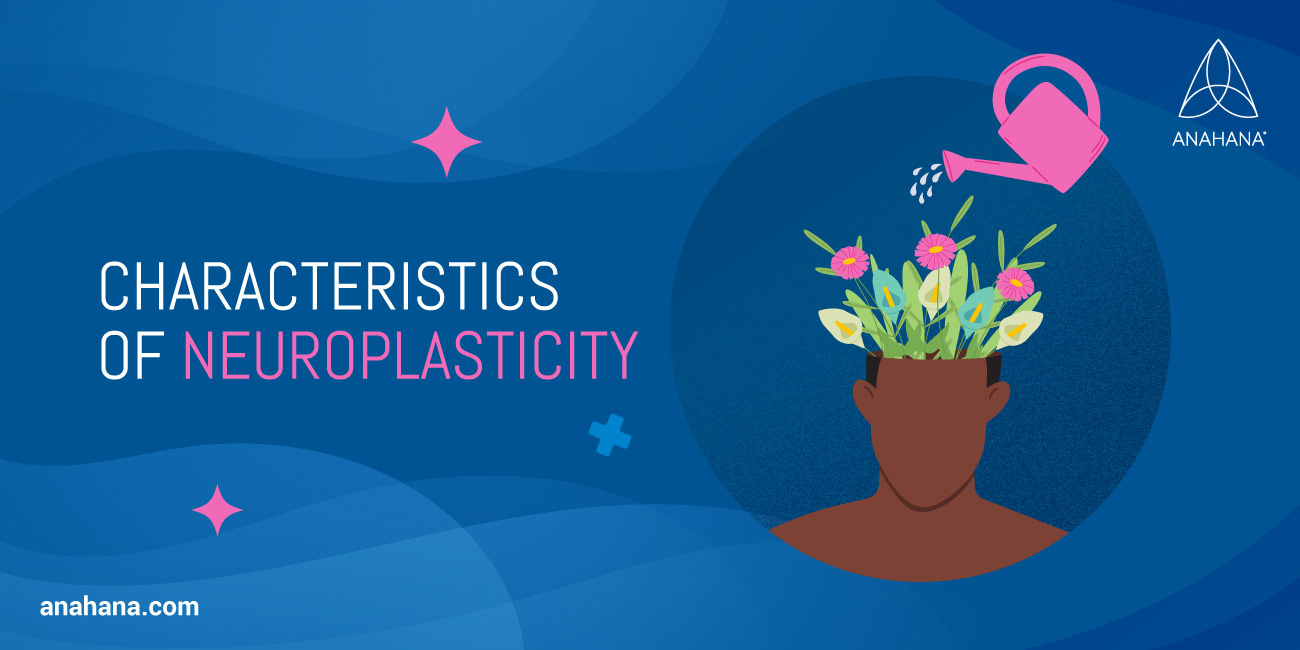 Research initially claimed that the brain’s neural networks become rigid and fixed as individuals age. However, recently it has been discovered that brains never stop changing and adjusting.
Research initially claimed that the brain’s neural networks become rigid and fixed as individuals age. However, recently it has been discovered that brains never stop changing and adjusting.
There are some defining characteristics of neuroplasticity.
Age and environment is the defining characteristic of neuroplasticity. Plasticity can occur at any age; certain changes are associated with specific ages. The brain undergoes many changes during the early years of life as the immature brain organizes and grows.
Young brains are generally more responsive and sensitive to experiences than older brains. However, this does not mean that older brains cannot adapt, learn new things and boost their plasticity.
Brain connections become stronger or weaker depending on the neural networks used more or less frequently. The interaction between environment and genetics plays a role in shaping an individual's brain plasticity. Neuroplasticity is an ongoing process involving brain cells, including vascular and glial cells. It is promoted and hindered by stress levels, daily lifestyle and habits.
In brain damage such as stroke, areas of the brain associated with some functions might be injured. Functional magnetic resonance imaging (fMRI) shows that healthy areas of the brain can take over the function of the damaged areas of the brain and restore the lost abilities.
Limitations of Brain Plasticity
Although brain plasticity is a promising avenue for preventing and treating various conditions, it has limitations. The brain is not malleable infinitely. Certain brain areas are responsible for specific functions. For example, brain areas are essential in cognition, speech, language and movements.
Most evidence of recovery and damage in brain plasticity is around the cerebral cortex. Although some areas can compensate for the loss, the cortex cannot fully take over functions of complex brain regions that are damaged, for instance, the hippocampus.
Neuroplasticity and Psychology
A crucial element of effective counseling and coaching is neural plasticity. In addition to brain changes and functional adaptations, neuroplasticity offers potential pathways for psychological change. Medications and chemicals are used to change how our brain works and psychology has invested a lot of effort in understanding changes in the brain through modifying thought patterns.
What if we could make significant and permanent changes through daily activities and experiences instead? This is where learning plays a significant role. When individuals learn, new pathways form in the brain. Every new lesson and experience can change the brain's working mode and connect new neurons.
Age and Neuroplasticity
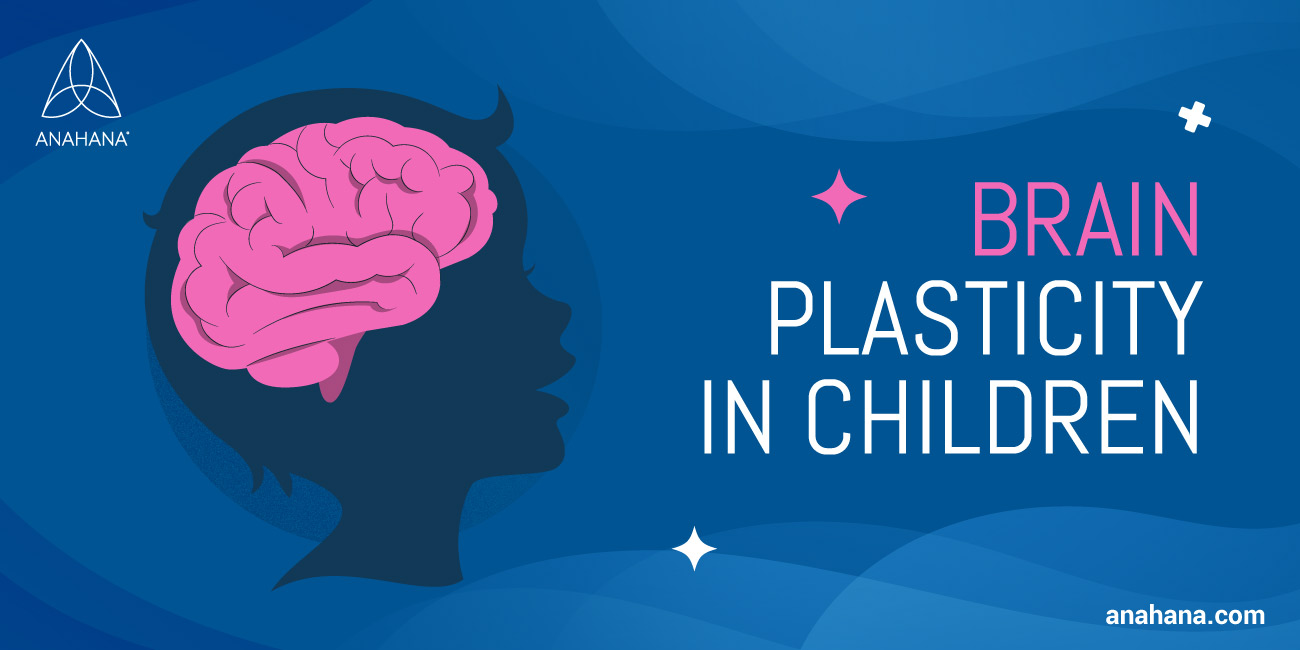 As individuals might think, there are changes in neuroplasticity with age, but it differs among individuals.
As individuals might think, there are changes in neuroplasticity with age, but it differs among individuals.
Brain Plasticity and Children
In children, their brains are constantly changing, growing and developing. With each new experience, the developing brain adapts and makes changes in the brain's structure, function or both. Therefore, neuroplasticity is the most active in the critical childhood period as a part of normal human development.
During the critical period, the nervous system receives sensory inputs for proper development.
Each neuron in an infant's brain has approximately 7,500 connections to other neurons. By age two, the number of connections between neurons is twice that of the average adult brain.
As the child grows up and the critical period ends, there is a drop in the number of connections that are maintained and the ones remaining are strengthened.
Four main types of neuroplasticity are observed in children.
- Impaired neuroplasticity: involves brain changes due to acquired or genetic disorders.
- Excessive or maladaptive plasticity involves reorganizing maladaptive and new pathways that can result in disabilities and disorders.
- Adaptive plasticity: changes resulting from learning or practicing a new skill or adapting to structural or functional changes following injury.
The processes are more pronounced in kids and younger children, increasing their ability to recover from injury more effectively than adults. There are profound cases of neuroplastic recovery, adaptation and growth in children.
Brain Plasticity in Adults
In contrast, neuroplasticity is observed at generally lower strengths and less than in children in adult brains, but the adult brain still can change and adapt.
The adult brain can restore lost and old functions and connections that have not been used often, enhancing cognitive functions and memory.
While there is a lower potential of neuroplasticity in adults compared to children or young adults, with a healthy lifestyle and some effort, adults can encourage positive growth and changes in their brains just like younger people.
How to Rewire your Brain and Improve Plasticity?
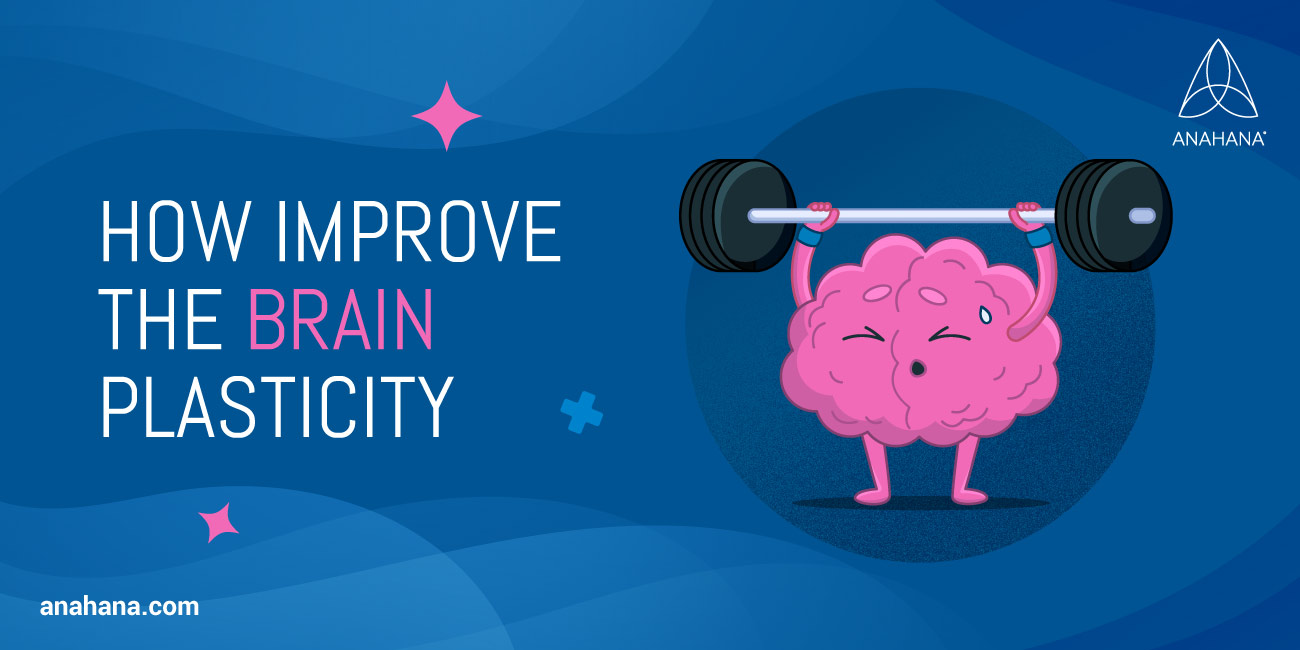 There are several ways to encourage changes in the brain to boost and enhance neuroplasticity at any point in life.
There are several ways to encourage changes in the brain to boost and enhance neuroplasticity at any point in life.
Enriching Environment
The first step is to create an enriching environment. Stimulating positive changes in the brain involves ensuring an enriched environment that offers challenge, novelty, and focused attention, especially during adolescence and childhood.
However, an enriching environment can also provide brain rewards in adulthood. An enriched environment stimulates the brain in different ways. For example, this might mean traveling, musical training and experience, reading fiction, creating artwork, and dancing.
Sleep and Exercise
Another way is getting rest or sleeping. Sleep plays a critical role in dendritic growth in the brain. Dendrites grow at the end of neurons and transmit information between neurons from one to the next. Greater brain plasticity can be promoted by strengthening neuron connections.
Sleep has important effects on an individual's physical and mental health. Research suggests that genetics and the makeup of the gray matter in the brain also contribute to these effects.
Practicing good sleep hygiene can help you improve your sleep. This means developing and following a consistent sleep schedule and creating an environment suitable for a relaxed and sound sleep.
Regular physical exercise or activity is another way to promote neuroplasticity, as it has several benefits. For example, studies show that exercise can help prevent the loss of neurons in significant areas of the hippocampus, a brain area involved in memory. Exercise can also help new neuron formation in the same brain region, boosting the brain's plasticity.
Recent studies show that exercise can also boost brain plasticity through its effects on the brain-derived neurotrophic factor (BDNF, a nerve growth protein), basal ganglia (a brain area that controls motor activity and learning) and functional connectivity. The increase in BDNF results in higher neurogenesis, which alleviates depression, and anxiety and results in cognitive improvement.
At least 150 minutes of moderate-intensity cardio exercises each week, including swimming, cycling, dancing or walking, are recommended, along with at least two days of strength training.
Lifestyle Changes
Intermittent fasting is also shown to promote adaptive responses in synapses, improving brain plasticity.
Practicing mindfulness and playing board games, card games, or video games can also improve the brain's plasticity.
Healing the Brain with Plasticity
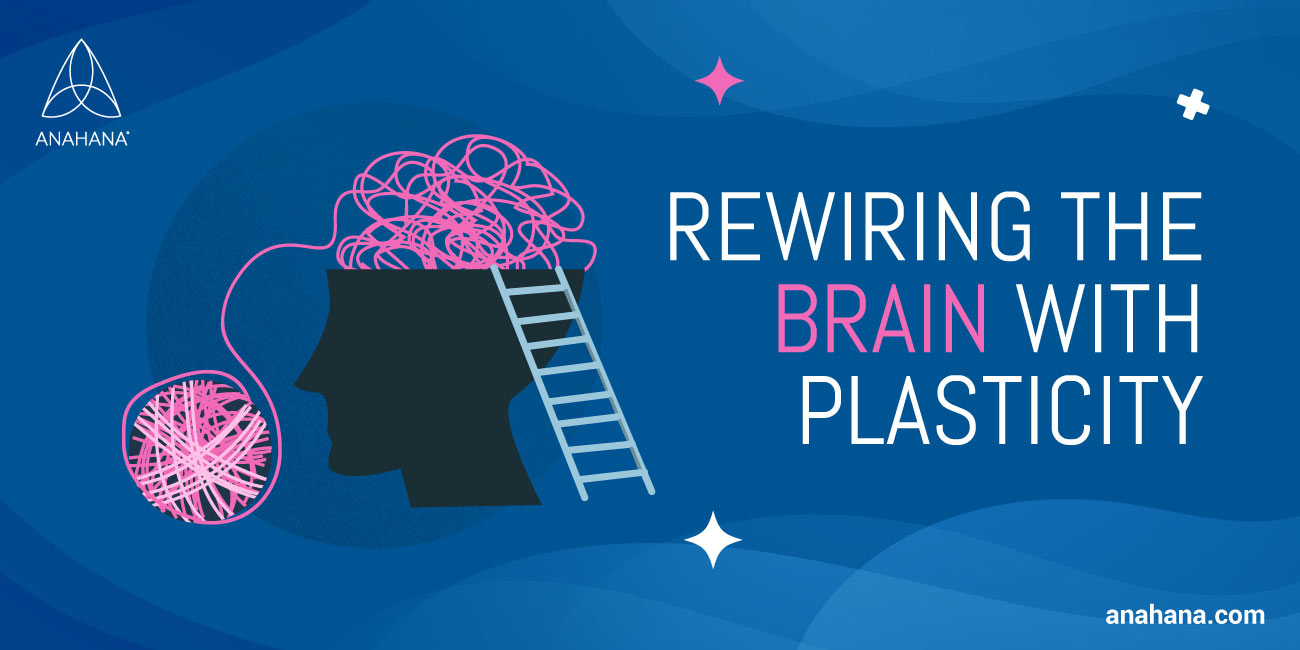 Research on neuroplasticity has advanced by observing changes in the brain of individuals who have undergone severe traumatic brain injury.
Research on neuroplasticity has advanced by observing changes in the brain of individuals who have undergone severe traumatic brain injury.
Research demonstrated that some individuals who went through serious trauma and had severe damage to the brain were able to recover to a high degree of functionality because of neuroplasticity. Neuroplasticity allows the nerve cells in the brain to compensate for the injury and to adjust activities in response to changes in the environment and new situations.
Studies show that full functionality can be recovered for individuals with different degrees of brain trauma. According to the Translational Research in Traumatic Brain Injury, three neuroplasticity phases follow the trauma experience.
-
Phase 1: Occurs immediately following an injury where neurons begin to die, resulting in decreased cortical inhibitory pathways. This phase lasts approximately 24 to 48 hours and can uncover secondary neural networks that have been rarely or never used.
-
Phase 2: Occurs a few days after the trauma. The activities of the cortical pathways become excitatory, creating new synapses. Other brain cells and neurons replace dead and damaged cells to facilitate healing.
-
Phase 3: Takes place after a few weeks, where the brain is remodeled through the generation of new synapses in full swing. At this phase, rehabilitation and therapy can help the brain learn new neural pathways, limiting the traumatic effects on the brain.
Many pharmacological treatments are under development and investigation that helps individuals recover from trauma through enhancing neuroplasticity, in addition to treatments and therapies involving gene expression and stem cells, recruiting immune cells to limit the damage and regulate inflammatory reactions.
When tissues are damaged, inflammatory reactions result in an elevation of nociceptive input to the central nervous system from the periphery.
Despite the limitations of neuroplasticity and the difficulty of recovering from brain injury, trauma, and brain injury are the best situations to utilize the neuroplastic abilities of the brain. For example, the brain can recover, reorganize, and induce significant changes following trauma or brain injury.
Brain Plasticity and Stroke
In individuals recovering from a stroke, neuroplasticity has been observed. Strokes often result in brain damage in patients due to reduced blood flow. The damage can range from moderate intensity (limited impairment of the facial muscles) to severe intensity (serious memory issues and cognitive function impairments).
Depending on the severity, brain volume might be reduced, and volumes of brain cells might die, resulting in brain dysfunction. The recovery from a stroke relies on the ability of the brain to heal itself.
However, stroke patients can also undergo successful recovery. According to experts, the best way to encourage neuroplasticity to recover from stroke includes using two key methods:
- Task repetition: constant repetition of skill or movement promoting quicker learning, for example, musical training.
- Task-specific practice
Learning a new activity or skill or relearning an old one through regular and specific practice can result in significant brain changes. You can learn with task repetition, and specific practice and improvements in a single area can also improve other skills and abilities.
Occupational, physical and speech therapies can encourage neuroplasticity and allow the brain to overcome physical and mental deficits. For example, beginning the rehabilitation process immediately following a stroke or any neurological injury can take advantage of the brain's natural increase in plasticity after trauma.
Part of rehabilitation focuses on rebuilding the connections between nerve cells. Brain rewiring can allow other regions to take over functions previously managed by damaged areas.
Brain Plasticity and Depression
Mental health conditions, including depression and anxiety, are associated with reduced neural plasticity. Negative neuroplasticity is associated with psychiatric disorders. Depression can result in brain damage promoting maladaptive and unhealthy pathways and discouraging adaptive ways.
Modern therapies for these conditions focus on improving neuroplasticity and teaching patients valuable coping skills.
Research shows that an Individual's daily behaviors can alter the brain structure. For example, they can unlearn depression and anxiety. Through professional neural training, these tendencies can be replaced with constructive pathways.
For example, post-traumatic stress disorder (PTSD) can become a significant future health issue.
Neuroplasticity exercises can promote neural plasticity, including brain exercises, connecting with loved ones, and a healthy diet.
Learning new skills and language, performing manual motor activities, or playing brain training games can also improve neuroplasticity and help with depression and anxiety.
Other Applications of Neuroplasticity
Research has uncovered other applications of neuronal plasticity and its involvement in different conditions, including binocular vision, phantom limbs, and hearing loss.
Binocular Vision
For many years, scientists assumed that humans had to acquire stereopsis or binocular vision in early childhood; otherwise, they would never gain it. More recently, successful improvements in individuals with stereo vision anomalies and amblyopia are prominent examples of neuroplasticity. Binocular vision and neuroplasticity are ongoing and active clinical and scientific research areas.
Phantom Limbs
Phantom limb pain is when individuals continue to feel a sensation or pain in a body part that has been amputated. This phenomenon is common for individuals undergoing amputations. The basis for phantom limb pain is neuroplasticity.
The cortical neurons or maps of the removed limbs interact with a surrounding area in the postcentral gyrus. This activity is misinterpreted by the cortex area responsible for the amputation.
Individuals can modify their phantom limbs' neural representations to generate commands to execute complicated movements.
Meditation
Research has also suggested a link between meditation and neuroplasticity. Meditation practice is connected to alterations in the intensity and cortical thickness of the gray matter in the brain. Meditation can result in physical changes in the brain structure, specifically the regions linked to depression, anxiety, fear, anger, compassion, and attention.
Loss of Hearing and Deafness
Loss of hearing or deafness can result in the auditory cortex and other associated brain areas undergoing compensatory plasticity. The auditory cortex is primarily responsible for processing auditory information; however, in individuals who are hard of hearing, it is redirected to other functions, including somatosensation and vision.
Conclusion
Neuroplasticity is a process that can be manipulated in the healthy and the diseased brain, resulting in numerous benefits. From the time the brain begins to develop until our death, the neuronal connections in the brain adapt in response to changing needs. This never-ending and dynamic process allows us to adapt and learn from different experiences.
References
Neuroplasticity - StatPearls - NCBI Bookshelf.
Neuroplasticity: How Experience Changes the Brain
Dynamic Brains and the Changing Rules of Neuroplasticity: Implications for Learning and Recovery
Neuroplasticity | Psychology Today Canada
Disclaimer
The contents of this article are provided for informational purposes only and are not intended to substitute for professional medical advice, diagnosis, or treatment. It is always recommended to consult with a qualified healthcare provider before making any health-related changes or if you have any questions or concerns about your health. Anahana is not liable for any errors, omissions, or consequences that may occur from using the information provided.

By: Emma Lee
Emma is an editor for Anahana and a soon-to-be graduate of the Master of Science program at the University of Toronto. She graduated with a Bachelor’s in Neuroscience and Immunology at the University of Toronto and has extensive experience in research. She is passionate about learning the science behind health and wellness and hopes to contribute her knowledge to help people live healthier lives. Outside of Anahana, Emma enjoys exploring nature, playing with her dog, and doing arts and crafts.